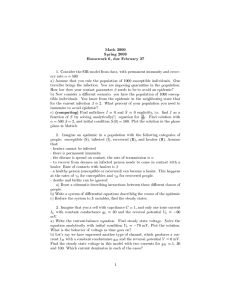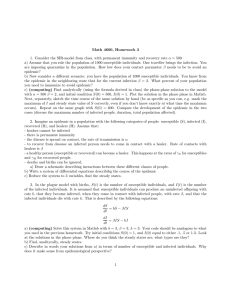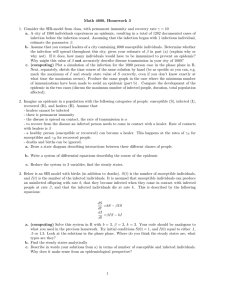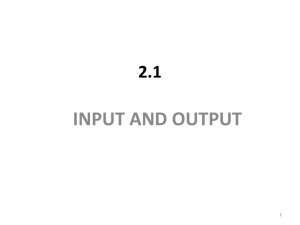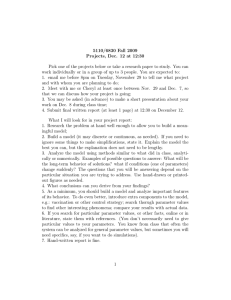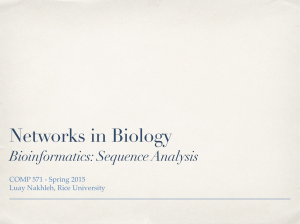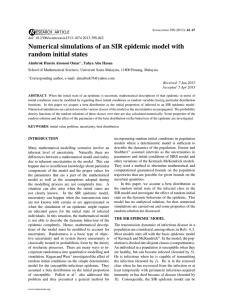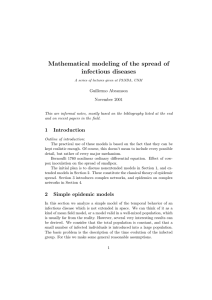Math 4600, Homework 3
advertisement
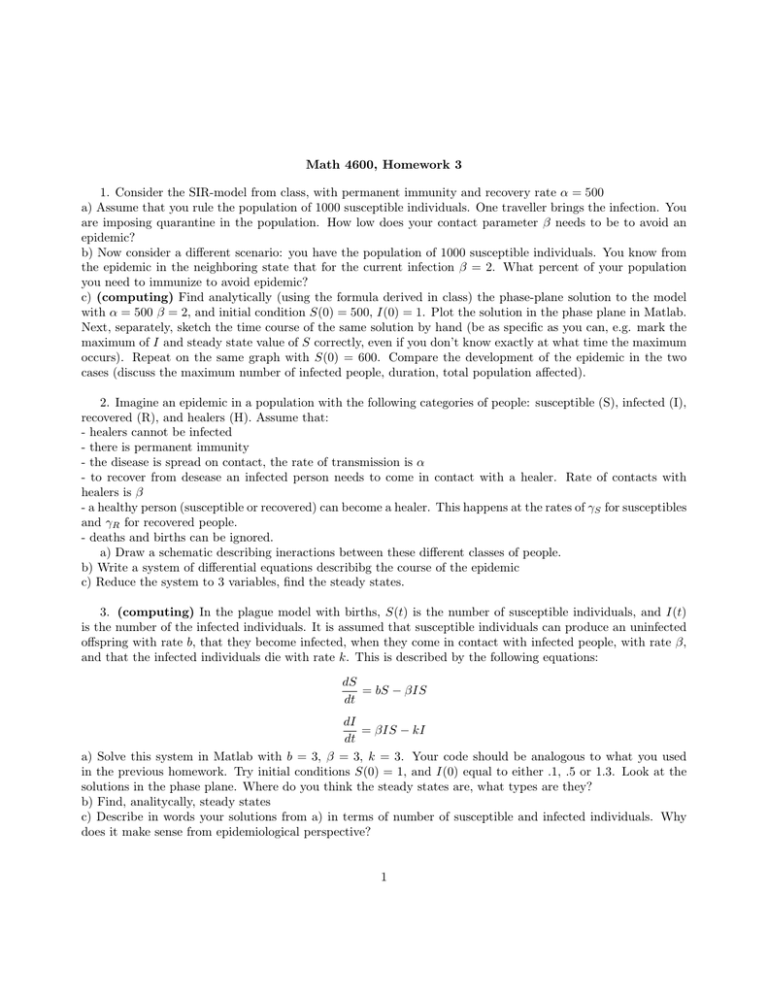
Math 4600, Homework 3 1. Consider the SIR-model from class, with permanent immunity and recovery rate α = 500 a) Assume that you rule the population of 1000 susceptible individuals. One traveller brings the infection. You are imposing quarantine in the population. How low does your contact parameter β needs to be to avoid an epidemic? b) Now consider a different scenario: you have the population of 1000 susceptible individuals. You know from the epidemic in the neighboring state that for the current infection β = 2. What percent of your population you need to immunize to avoid epidemic? c) (computing) Find analytically (using the formula derived in class) the phase-plane solution to the model with α = 500 β = 2, and initial condition S(0) = 500, I(0) = 1. Plot the solution in the phase plane in Matlab. Next, separately, sketch the time course of the same solution by hand (be as specific as you can, e.g. mark the maximum of I and steady state value of S correctly, even if you don’t know exactly at what time the maximum occurs). Repeat on the same graph with S(0) = 600. Compare the development of the epidemic in the two cases (discuss the maximum number of infected people, duration, total population affected). 2. Imagine an epidemic in a population with the following categories of people: susceptible (S), infected (I), recovered (R), and healers (H). Assume that: - healers cannot be infected - there is permanent immunity - the disease is spread on contact, the rate of transmission is α - to recover from desease an infected person needs to come in contact with a healer. Rate of contacts with healers is β - a healthy person (susceptible or recovered) can become a healer. This happens at the rates of γS for susceptibles and γR for recovered people. - deaths and births can be ignored. a) Draw a schematic describing ineractions between these different classes of people. b) Write a system of differential equations describibg the course of the epidemic c) Reduce the system to 3 variables, find the steady states. 3. (computing) In the plague model with births, S(t) is the number of susceptible individuals, and I(t) is the number of the infected individuals. It is assumed that susceptible individuals can produce an uninfected offspring with rate b, that they become infected, when they come in contact with infected people, with rate β, and that the infected individuals die with rate k. This is described by the following equations: dS = bS − βIS dt dI = βIS − kI dt a) Solve this system in Matlab with b = 3, β = 3, k = 3. Your code should be analogous to what you used in the previous homework. Try initial conditions S(0) = 1, and I(0) equal to either .1, .5 or 1.3. Look at the solutions in the phase plane. Where do you think the steady states are, what types are they? b) Find, analitycally, steady states c) Describe in words your solutions from a) in terms of number of susceptible and infected individuals. Why does it make sense from epidemiological perspective? 1
